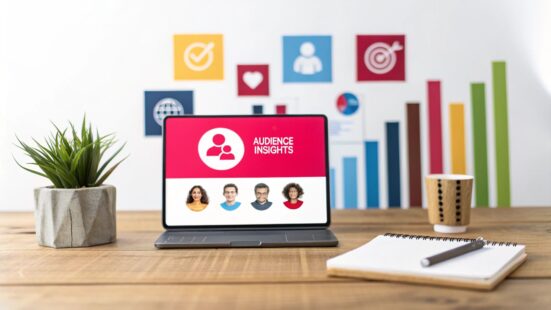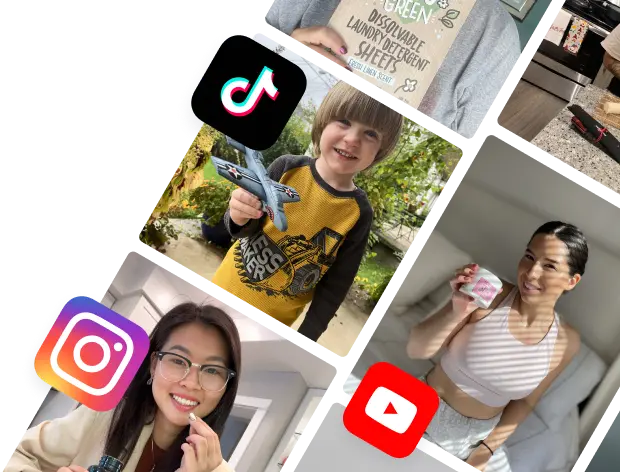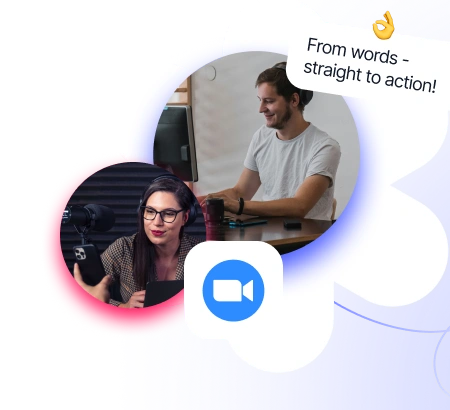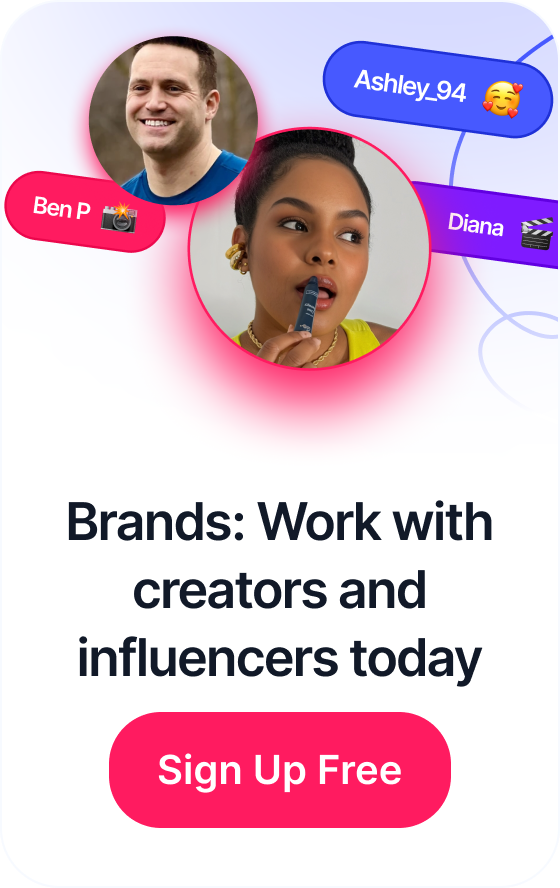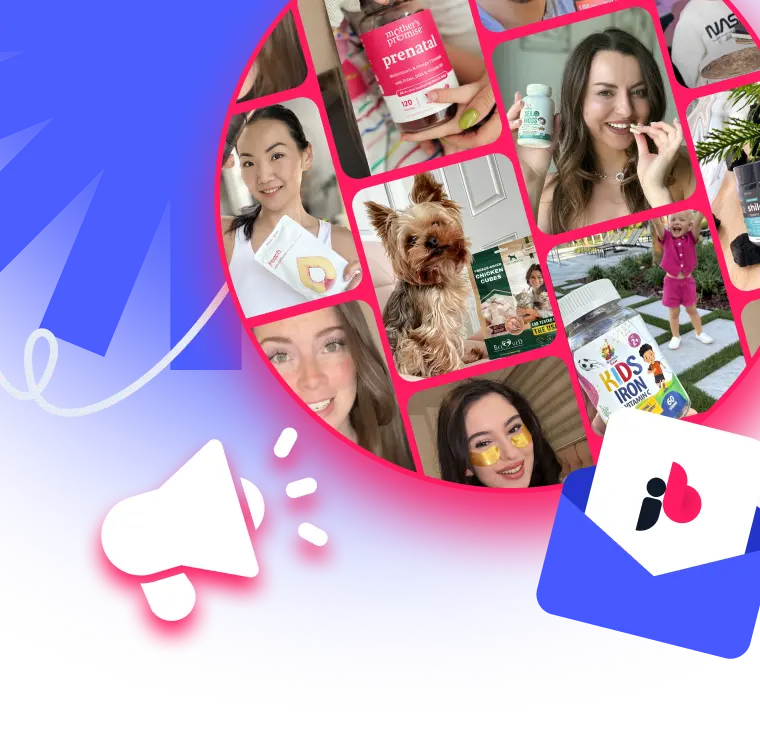 10 Best Influencer Marketing Platforms to Transform Your Campaign in 2025
10 Best Influencer Marketing Platforms to Transform Your Campaign in 2025
A real social media audience analysis is all about digging into your followers' data to figure out who they are, what they actually care about, and how they act online. It's about moving past vanity metrics to find the kind of insights that should shape your content, your products, and your entire marketing strategy. Getting this right is the only way to build real connections and hit your business goals.
Table of Contents
Why Audience Analysis Is Your Strategic Edge
It's so important to move past the idea that audience analysis is just about basic demographics. Sure, age and location are a starting point, but they're just the tip of the iceberg. A deep analysis is a strategic tool that can inform every single part of your business, turning raw numbers into a serious competitive advantage. If you want to truly master social media marketing, you can't skip this part.
This approach is what ensures your efforts actually lead to measurable results—think higher engagement, better conversion rates, and genuine brand loyalty.
Connect Analysis to Business Goals
A proper social media audience analysis isn't some task you do in a silo; it's the engine that powers your results. Once you know who you're talking to, you can stop guessing and start making strategic moves.
- Shape Compelling Content: Instead of creating content you think your audience wants, you can make content you know they need. This is how you get more engagement and more shares.
- Guide Product Development: The conversations and pain points you see from your audience are a goldmine for product ideas and improvements. Are people constantly complaining about a flaw in a competitor's product? That's a huge opportunity for you.
- Refine Customer Service: By keeping an eye on sentiment and frequently asked questions, you can get ahead of problems and fine-tune your support, which builds incredible trust and loyalty.
This infographic breaks down how a marketing team can pull together different data points to build a complete picture of their audience.
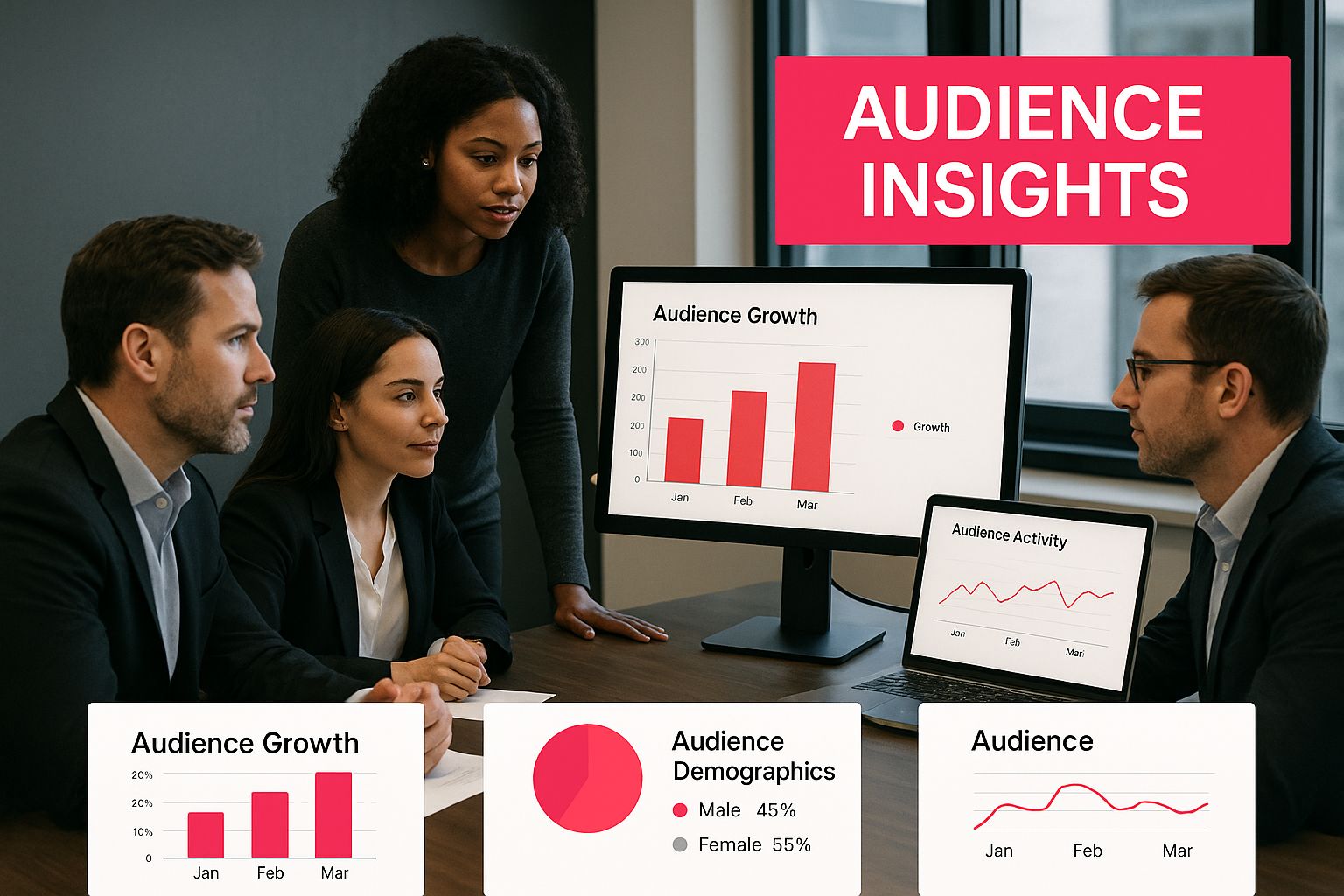
The big takeaway here is that a winning strategy pulls together demographic, behavioral, and psychographic data to create a full, 360-degree view of the customer.
The Scale of the Opportunity
The sheer number of people on social media makes it impossible to ignore. As of October 2025, there are an estimated 5.66 billion active social media users across the globe. That means more than two-thirds of the planet is on these platforms every month.
Even more striking, a whopping 93.8% of the world's internet users are on social media. This shows you just how woven these platforms are into our daily lives. You can discover more insights about global social media use on DataReportal if you want to dive deeper into the stats.
A social media audience analysis transforms a routine task into your brand's competitive advantage. It’s the difference between shouting into the void and having a meaningful conversation with people who are ready to listen, engage, and buy.
At the end of the day, this strategic approach has a direct impact on your bottom line. When you create more effective campaigns for an audience you truly understand, you're going to see a much better financial return. You can explore this connection further in our guide on how to measure your social media marketing ROI. Every insight you uncover is one step closer to a more efficient and profitable strategy.
Sourcing Actionable Data from Social Platforms
Your social media audience analysis is only as strong as the data you collect. To get past the guesswork and really understand who you're talking to, you need to tap directly into the goldmine of information available on the platforms where your audience hangs out. This means getting comfortable with each platform's own built-in analytics tools and knowing exactly what to look for.
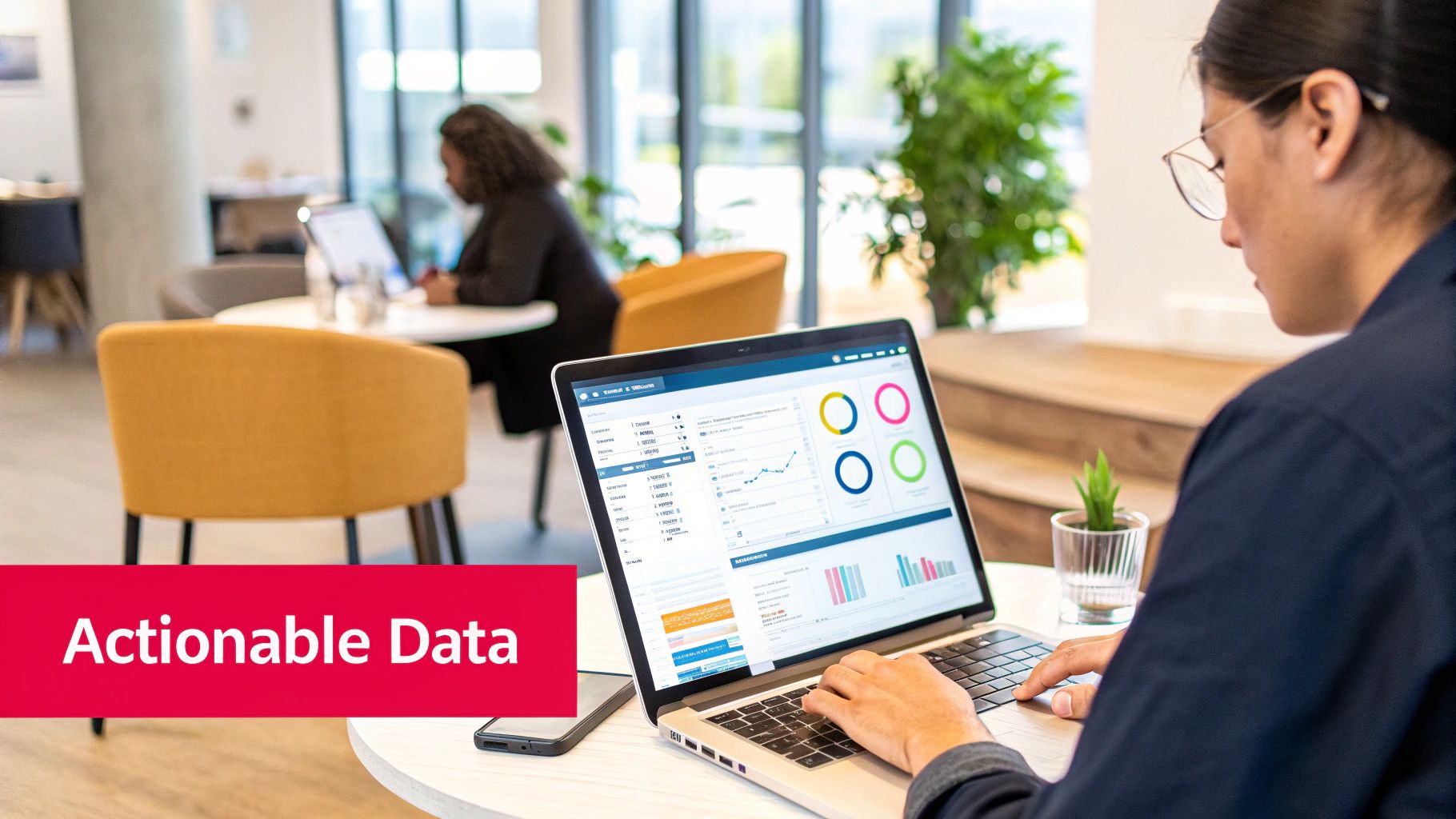
Think of these "native" tools as your single source of truth. Dashboards like Meta Business Suite, X Analytics, and TikTok's analytics give you a direct line to your followers' behavior. They are packed with the demographic, psychographic, and behavioral data you need to build a crystal-clear picture of your audience.
Leveraging Native Analytics Dashboards
Every platform has its own analytics suite, and the first step is just knowing where to look. Don’t just glance at follower counts and call it a day; you need to dive deep into the specific reports that reveal genuinely useful insights.
For instance, Meta Business Suite is an absolute powerhouse for understanding your Facebook and Instagram audiences. It serves up detailed breakdowns of your followers' age, gender, and location. Even better, it shows you their peak activity hours—a critical piece of intel for scheduling your content to maximize its reach and engagement.
TikTok’s analytics offer a surprisingly granular view, too. Beyond the basic follower metrics, you can see which specific sounds are trending with your audience and even track viewer retention on your videos. If you see a pattern of viewers dropping off in the first three seconds, that’s a direct signal to make your hooks way more compelling.
Key Data Points to Collect from Social Platforms
When you're digging through these dashboards, it's easy to get lost in a sea of numbers. To make your efforts count, you need a focused plan for what to collect. This table outlines the essential data points that will actually inform your strategy.
| Data Category | Specific Metrics to Track | Primary Platforms for This Data |
|---|---|---|
| Demographics | Age, gender, top countries/cities, language | Meta (Facebook/Instagram), TikTok, Pinterest |
| Activity Patterns | Peak active hours, most active days of the week | Meta (Facebook/Instagram), TikTok, X (Twitter) |
| Content Performance | Engagement rate, reach, video views, shares, saves | All major platforms |
| Format Preferences | Top-performing formats (e.g., Reels vs. Carousels vs. Stories) | Instagram, TikTok, Facebook |
| Audience Growth | Follower growth rate, follows vs. unfollows over time | All major platforms |
| Click-Throughs | Link clicks, profile visits from content | Instagram, Facebook, X (Twitter), LinkedIn |
By systematically gathering this information, you start to move from assumptions to data-backed decisions. Every metric, from engagement rate to follower location, is another clue.
Your goal is to gather data that answers one key question: "How can I serve my audience better?" Each data point helps you create more relevant and impactful content that truly connects.
Mastering these platforms is fundamental, but you also need a system for monitoring your progress over time. For more practical advice on this, you can explore our guide on how to track social media analytics effectively.
Expanding Your View with Social Listening
While native analytics tell you how people interact with your content, they don't show you the bigger picture. This is where third-party social listening tools like Brand24 or Sprout Social come in. These platforms monitor conversations and brand mentions across the entire web, not just on your own profiles.
Social listening helps you uncover things you'd otherwise miss:
- Brand Sentiment: How do people really feel about your brand? Sentiment analysis tracks whether mentions are positive, negative, or neutral, giving you a pulse on public perception.
- Unprompted Feedback: This is where the gold is. Discover what customers are saying when they aren't tagging you directly. It's often the most honest and valuable feedback you can get.
- Industry Trends: What topics, keywords, and pain points are buzzing in your niche? This helps you create timely content that joins relevant conversations instead of just broadcasting your own message.
Imagine a skincare brand using social listening. They might find that users are frequently discussing the lack of sustainable packaging in the beauty industry. This is an insight they'd likely miss by only looking at comments on their own posts. It could inspire a whole new product line or marketing campaign that directly addresses a major audience concern.
This multi-dimensional approach ensures your social media audience analysis is both deep and wide, giving you a true competitive edge.
How to Segment Your Audience for Real Insights
All that raw social media data you've gathered? It's just a bunch of noise until you give it some structure. Segmentation is how you find the actual signal in that noise. It's the process of turning a faceless crowd of followers into distinct groups of real people who share common ground. This is how you stop shouting into the void and start having conversations that actually connect.
And let's be clear: just glancing at basic demographics like age and location won't cut it anymore. For insights that actually move the needle, you have to slice your audience data in more meaningful, behavior-driven ways. Get this right, and your marketing becomes more relevant, more personal, and a whole lot more effective.
Moving Beyond Basic Demographics
The real power of segmentation comes from layering different types of data. Think of it this way: demographics tell you who your audience is, but psychographics and behavioral data explain why they do what they do and how they do it. When you combine these, flat profiles suddenly pop into three-dimensional personas.
Let's imagine a sustainable fashion brand. Their initial data might show a core audience of women aged 25-40. That’s a start, but it’s way too broad. By adding a few more layers, they can uncover much richer segments.
Psychographic Segmentation: This is all about grouping people based on their interests, values, and lifestyles. Our fashion brand might identify a segment of "Eco-Conscious Minimalists." These are folks who value quality over quantity and tend to follow slow-fashion influencers.
Behavioral Segmentation: Here, we're looking at how people actually interact with the brand. They could create a segment for "Loyal Advocates"—customers who don't just buy often but also actively share user-generated content and leave glowing reviews.
This layered approach gives the brand real strategic direction. The "Eco-Conscious Minimalists" will probably respond best to content about craftsmanship and ethical sourcing. Meanwhile, the "Loyal Advocates" could be the perfect candidates for a brand ambassador program. If you want to see this in action, check out these customer segmentation examples to get the wheels turning.
Creating Actionable Audience Segments
With a deeper, more layered understanding of your audience, you can start building specific, actionable segments. These aren't just for a slide deck; they are practical tools that should guide your entire content strategy. The goal is to create segments that represent a genuine opportunity for your business.
Take a B2B SaaS company, for example. A dive into their social media audience might reveal a few key groups hiding in plain sight.
Potential New Customers: These are the people following your brand and your competitors, engaging with industry hashtags, and downloading your whitepapers. They're clearly in the research phase. Your content for them should be purely educational and problem-focused—show off your expertise without the hard sell.
High-Value Advocates: This group is gold. They're current customers who frequently mention your brand in a positive light, share your content, and jump into community discussions. Your content for this segment should be all about making them feel seen and valued. Think exclusive previews, community shout-outs, and chances to give direct feedback.
Disengaged Followers: We all have them. These are users who followed you at some point but now rarely interact. They could be old customers or people whose needs have shifted. A re-engagement campaign with a killer offer or a simple poll asking about their current challenges could be just what you need to win them back.
Segmentation is the bridge between data and action. It allows you to speak with specific groups within your audience instead of just shouting at everyone. This personalization is what builds trust and drives results.
Applying Segments to Your Content
Once you’ve defined your segments, it's time to put them to work. Every single piece of content you create should be mapped to at least one of your core audience segments. This simple check ensures every post has a clear purpose and a specific person in mind.
For instance, a fitness app might create a "New Year, New Goals" segment in January, targeting users who have shown interest in beginner workouts. Naturally, their content would focus on introductory guides, motivational tips, and low-impact exercises.
At the same time, they could be targeting their "Marathon Trainers" segment with content about advanced nutrition strategies, performance tracking, and endurance-building techniques. Both types of content can live happily on the same social channels, but they're speaking to completely different needs. This is how you boost relevance and engagement across the board.
Analyzing Competitor Audiences for Hidden Opportunities
Your audience doesn't operate in a bubble. They’re following, engaging with, and almost certainly buying from your competitors. But that overlap isn't a threat—it's a goldmine of strategic insights just waiting to be dug up.
Running a competitor audience analysis is how you find your strategic edge. You get to learn from their wins and, even better, their mistakes.

The real goal here is to spot the gaps. Is there a demographic they're completely ignoring that you could serve? Is their content missing key topics their followers are practically begging for in the comments? Are their customers airing grievances that your product solves perfectly?
Answering these questions is what lets you sharpen your own strategy and pull in those underserved audience segments.
Identifying Your True Competitors
First things first, you need to know who you're really up against. It’s not always the brand with the biggest market share. On social media, your competitors are any brand, creator, or page vying for the same eyeballs and engagement in your niche.
Start with your direct business rivals, sure, but then think bigger.
- Aspirational Competitors: These are the big players, the industry leaders you look up to. Their audience is likely the one you want to attract down the line, so studying their playbook gives you a roadmap.
- Indirect Competitors: These brands solve the same core problem as you, just with a different solution. For a company selling meal kits, a popular food blogger who posts free recipes is an indirect competitor.
- Content Competitors: This group includes creators or media outlets that produce content for your target audience, even if they don't sell a thing. They are absolute masters at capturing the attention you're fighting for.
Once you’ve got your list, it's time to peel back the layers and see what makes their audience tick.
Competitor analysis isn’t about copying what everyone else is doing. It’s about understanding the entire field so you can find a unique space to own. The biggest opportunities are usually hidden in what your competitors aren't doing.
Analyzing What Their Audience Loves and Hates
With your list of competitors ready, it’s time to put on your digital anthropologist hat. Dive deep into their social profiles and pay close attention to the actual conversations happening in the comments, mentions, and shares.
Look for Positive Signals:
- Top-Performing Content: Which posts are blowing up with likes, shares, and genuinely enthusiastic comments? Take note of the format (video, carousel, meme), the topic, and the tone. This is a direct signal of what resonates.
- Praise and Compliments: When followers leave glowing reviews, what specific features or benefits do they call out? This gives you a peek directly into their perceived value proposition.
Look for Negative Signals (This is the real gold):
- Common Complaints: Are customers repeatedly complaining about slow shipping, confusing product features, or non-existent customer service in the comments? Every single one of those complaints is a potential opening for you to highlight your own strengths.
- Unanswered Questions: When followers ask questions that go completely ignored, it signals a major gap in that competitor's content or customer support. You can swoop in and create content that directly answers those exact questions.
Uncovering Audience Gaps and Overlaps
The final piece of this puzzle is comparing their audience demographics and psychographics to your own. A GWI report on social media behaviors shows the average user is active on nearly seven different platforms a month, meaning there’s a massive chance your ideal customers are already following your rivals.
The key is to understand how and why. People now spend an average of 141 minutes per day on social media. Their motivations are shifting, too—it's not just about family anymore. Today, 38.8% use social platforms for "filling spare time" and 35% for "reading news," which shows a huge appetite for genuinely engaging content.
To put this into practice, here is a simple framework you can use.
Competitor Audience Analysis Framework
This table helps structure your thinking as you compare your own audience against a competitor's, making it easier to spot where the real opportunities are.
| Analysis Area | What to Look for in Your Audience | What to Look for in Their Audience |
|---|---|---|
| Demographics | What are the core age, gender, and location stats of your current followers? | Do they reach a different demographic? (e.g., younger, more international) |
| Top Content | Which of your posts get the most engagement and positive feedback? | What formats, topics, and tones are driving their best results? |
| Pain Points | What frustrations or problems do your followers mention? | What are their followers complaining about in the comments? (e.g., shipping, support) |
| Platform Focus | Where are you strongest? (e.g., Instagram, LinkedIn) | Are they dominating a platform you're neglecting, like TikTok or Pinterest? |
| Community Vibe | What is the general tone of your comment section? (e.g., supportive, humorous) | Is their community highly engaged, or is it a ghost town? Are they asking questions? |
By looking at both sides, you can pinpoint exactly where their audience overlaps with yours and—more importantly—where it doesn't. That gap is your sweet spot. It’s where you can focus your efforts to attract a fresh, untapped segment of the market that your competitors are completely missing.
Turning Your Insights into a Winning Content Strategy
All that data you just collected? It's gold. But data sitting in a spreadsheet is just trivia. The real magic happens when you connect the dots between your audience segments, their biggest headaches, and what your competitors are up to. This is where you pivot from analysis to action, building a content plan that's not just a guess, but a data-backed strategy built to win.
Think of it this way: you're finally done throwing spaghetti at the wall to see what sticks. Now, every single post, story, and video you create will have a purpose. You’re no longer hoping something works; you're building a content machine based on what you know your audience craves. That's the difference between just making noise and actually building a brand people care about.
Picking the Right Playground for Your People
If your audience analysis did its job, one thing should be painfully obvious: your brand doesn't belong everywhere. Spreading yourself thin across every platform is a recipe for burnout. The smart move is to go deep where it counts—on the platforms where your most valuable customers are already hanging out.
Did you find out your "High-Value Advocates" are mostly mid-career professionals? Then LinkedIn is your new best friend. That's where you'll drop industry deep-dives and thought leadership pieces. But if your "Potential New Customers" are dominated by Gen Z, you absolutely have to be on TikTok and Instagram Reels, serving up the short, punchy, visual content they live for.
- B2B Brands: Usually kill it on LinkedIn, where they can laser-target by job title and industry.
- E-commerce & Lifestyle Brands: Live and breathe on visual platforms like Instagram and Pinterest. It's all about the aesthetic.
- Brands Targeting Younger Demographics: If you're not on TikTok, you're invisible. Get comfortable with trending sounds and authentic, low-fi video.
Match Your Content Format to Their Vibe
Okay, you know where to post. Now, what are you going to post? Your data holds the answer. Dig into what's been working for you and, just as importantly, for your competition. Don't just make videos because someone told you "video is king." Make them because your audience has proven they can't get enough of them.
Let's say your competitive analysis showed your rival's "how-to" carousel posts get insane engagement, but their long-form videos are crickets. That's a huge clue! It tells you there's a hungry audience for scannable, educational content that you can swoop in and deliver even better.
The sweet spot for amazing content is where what your brand wants to say overlaps with what your audience is dying to hear. Your analysis is the treasure map that leads you there.
A beauty brand, for instance, might learn their audience loves user-generated content (UGC) tutorials in Instagram Stories but wants glossy, aspirational carousels on the main feed. That's a powerful insight. It lets them tailor the format to the context and squeeze more impact out of every post.
Find a Tone of Voice That Clicks
How you say something matters just as much as what you say. Your audience analysis is the key to unlocking a tone of voice that feels genuine and forges a real connection. Go back and look at the language your audience uses in comments, DMs, and community forums.
Are they buttoned-up and professional, or are they firing off slang, emojis, and memes? Mirroring their communication style makes your brand feel like one of them, not some faceless corporation talking down to them.
| Audience Segment | Communication Style | Brand Tone of Voice |
|---|---|---|
| Tech Professionals (LinkedIn) | Industry jargon, data-driven points. | Authoritative, insightful, professional. |
| DIY Home Decorators (Pinterest) | Enthusiastic, aspirational language. | Inspiring, helpful, creative. |
| Gamers (TikTok/X) | Memes, inside jokes, casual slang. | Humorous, witty, part of the community. |
This isn't about being fake. It's about adapting your brand's core personality to speak the native language of each platform and the people on it.
Build a Content Calendar That Works for You
Time to pull it all together into a content calendar. This isn't just a schedule—it's your strategic roadmap. Every entry should be rooted in the insights you worked so hard to uncover.
Post When They're Watching: Use the data on when your audience is most active to schedule posts for maximum reach. Stop posting at 9 AM on Monday if your audience is scrolling at 7 PM on Thursday.
Talk to Your Segments: Plan content that speaks directly to each of your key audience groups. Maybe one week is all about educational content for "Potential New Customers," while the next features success stories for your "High-Value Advocates."
Solve Their Problems: Map every content idea directly back to the pain points and interests you identified. This guarantees every post delivers real value and isn't just filler.
A plan like this turns your social media from a reactive chore into a proactive growth engine. For a deeper dive into this process, check out our guide on how to create a content marketing strategy that actually drives results.
Your Questions on Audience Analysis Answered
Even with a solid plan, jumping into audience analysis can feel a little… murky. It's one thing to know the steps, but it's another to handle the real-world questions that pop up along the way.
This is where we tackle those common hurdles. Think of this as the "what now?" part of the guide, designed to clear up confusion and get you back to what really matters: connecting with your people.
How Often Should I Analyze My Audience?
The short answer? This isn't a one-and-done job. A good social media audience analysis should be a living, breathing part of your marketing rhythm, not a report you dust off once a year.
But the ideal frequency really hinges on your business cycle and goals.
For most brands, a quarterly deep dive is a fantastic starting point. This gives you enough time to spot meaningful trends and gather significant data without getting lost in the weeds. A quarterly review is when you'll look at everything from demographic shifts to content performance patterns across all your platforms.
On top of that, you should be doing a monthly check-in. This is a much lighter review focused on your core KPIs:
- Engagement Rate Trends: Are your numbers climbing or dipping?
- Follower Growth: Are you attracting the right kinds of followers?
- Top-Performing Content: What's resonating right now?
These quick pulse checks let you make agile adjustments to your content calendar. You can pivot quickly instead of waiting three months to find out a strategy isn't landing.
What Tools Should I Use on a Budget?
You absolutely do not need a massive budget to get powerful insights. Many of the best tools for audience analysis are either free or surprisingly affordable, especially when you’re just starting out.
Your first stop should always be the native analytics built right into the social platforms. Tools like Meta Business Suite (for Facebook and Instagram), TikTok Analytics, and LinkedIn Analytics are completely free. They are packed with essential data on who your followers are, when they’re online, and what they like to see from you.
Don't underestimate the power of free, native tools. They provide a direct, unfiltered look at how users interact with your brand on each specific platform, offering a foundational layer of data you can't get anywhere else.
Once you’ve mastered the basics, think about layering in a social listening tool that offers a freemium plan. These can help you keep an eye on brand mentions and industry conversations happening outside your own profiles. While the full-featured versions can be pricey, many have free trials or limited plans that are perfect for smaller operations.
What if My Data Is Confusing or Contradictory?
It happens all the time. Your Instagram data says your audience is mostly Gen Z, but your website traffic from social points to Millennials. Or maybe the posts with the most likes are getting the fewest clicks.
When data seems to clash, don't panic. It's usually pointing to a more nuanced truth about your audience.
Conflicting data is often a sign that you’re engaging different audience segments on different platforms—or with different types of content. That Gen Z crowd on Instagram might love your brand's aesthetic and entertainment value, while the Millennials visiting your site are more focused on making a purchase.
Instead of seeing a contradiction, see a segmentation opportunity. This is a clear signal to tailor your strategy for each platform. Maybe your Instagram content should lean into trends and personality, while your Facebook or Pinterest content becomes more product-focused and conversion-driven. The key is to embrace the complexity and use it to build a smarter, more sophisticated strategy.
Ready to connect with a diverse network of over 250,000 creators to amplify your brand's message? JoinBrands makes it simple to launch campaigns, source high-quality user-generated content, and accelerate your sales with TikTok Shop Affiliates and influencers across every major platform. Discover how our AI-powered platform can streamline your entire creator marketing workflow at https://joinbrands.com.
